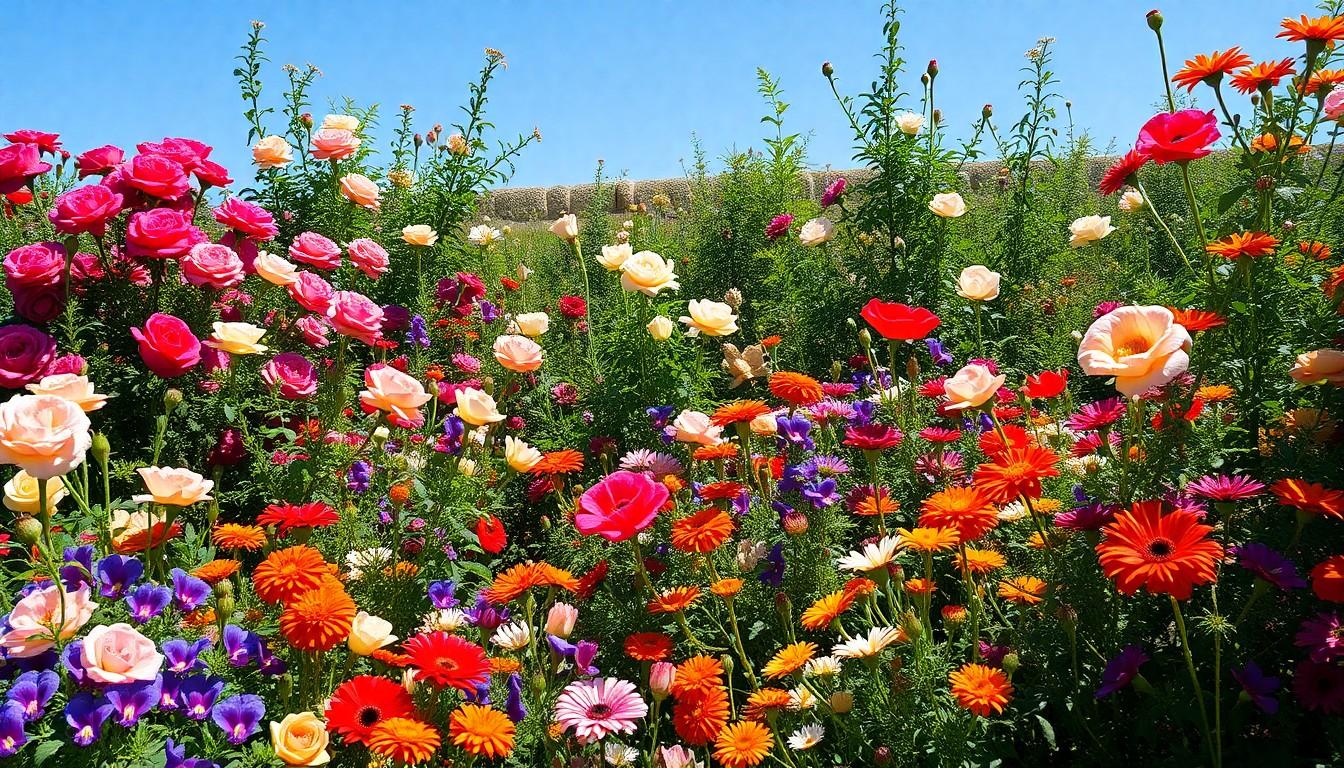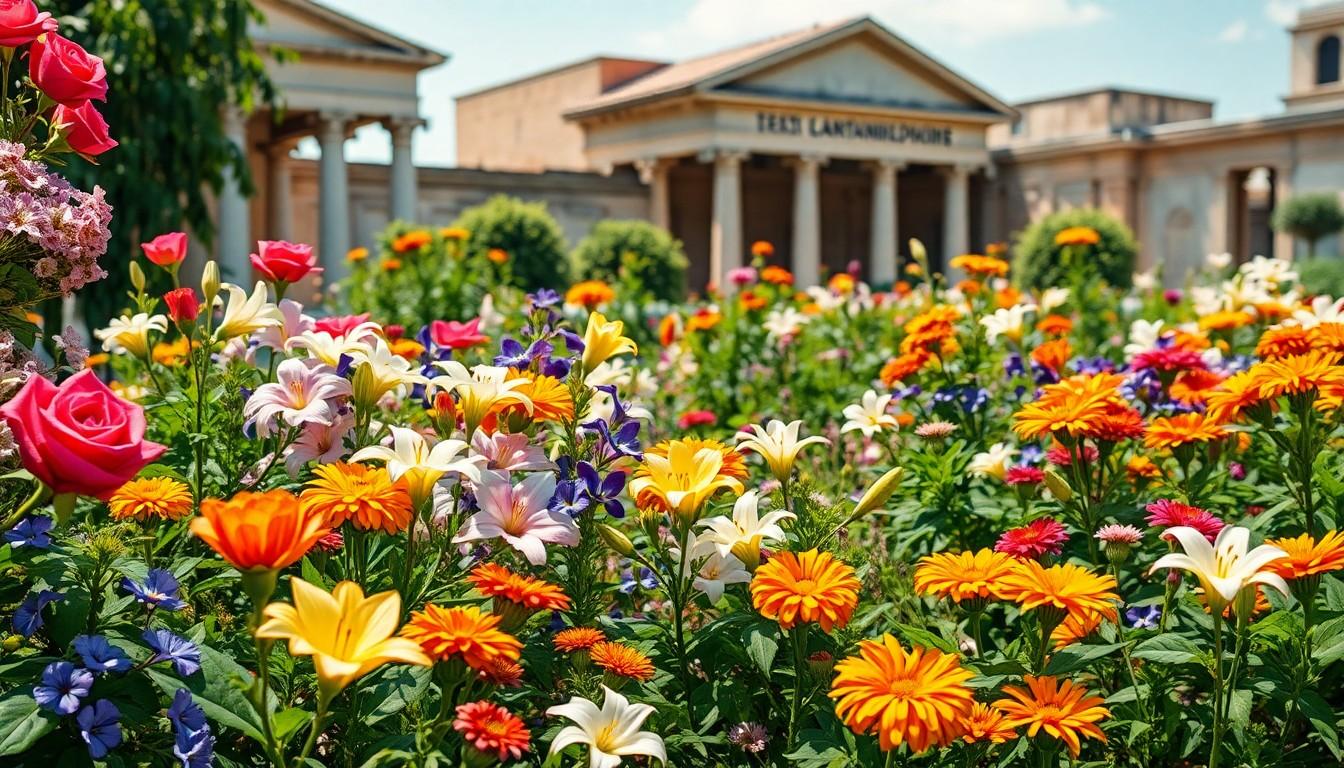In the bustling heart of ancient Rome, flowers weren’t just pretty petals—they were symbols of love, power, and even a touch of mischief. Imagine gladiators tossing roses to their sweethearts or emperors draping themselves in floral garlands to flaunt their status. Roman flowers played a vital role in ceremonies and daily life, adding color and fragrance to an otherwise dusty existence.
Overview Of Roman Flowers
Flowers held immense significance in ancient Rome, often representing deep emotions and pivotal social customs. They served as symbols of dedication, particularly in romantic contexts, where bouquets of roses expressed love and affection. Gladiators frequently gifted roses to their beloved, showcasing bravery alongside tenderness.
Various flowers adorned celebrations and rituals, enhancing both public and private events. This practice included the use of laurel wreaths during victories, highlighting the connection between flowers and status. Additionally, emperors wore floral garlands, which emphasized their power and magnificence.
Many gardens flourished in Rome, creating vibrant spaces filled with poppies, violets, and lilies. Each of these flowers contributed unique meanings and aesthetics. Violets symbolized loyalty, while poppies represented sleep and peace, and lilies conveyed purity.
Flower festivals punctuated the Roman calendar, bringing communities together in joy and reverence. These events celebrated the beauty of nature, allowing citizens to engage with the sensory delights of flowers. Rituals often incorporated specific blooms linked to deities, symbolizing a connection to the divine.
Flowers enriched everyday life in ancient Rome. They provided not only visual beauty but also fragrant aromas that permeated daily environments. Individuals employed flowers in cooking and medicine, showcasing their multifaceted value.
Roman flowers defined social interactions and cultural practices throughout ancient history. Their presence infused life with color, meaning, and emotion, establishing a legacy that resonates even in contemporary times.
Types Of Roman Flowers

Roman gardens boasted an array of stunning flowers, each enriching daily life with color and meaning. These blooms played crucial roles in ceremonies, societal customs, and personal expressions.
Popular Varieties
Common varieties of flowers included roses, violets, and lilies. Roses symbolized love, frequently given in romantic gestures. Violets held connotations of loyalty, often included in wedding bouquets. Lilies represented purity and adorned altars during religious rites. Other notable flowers, such as poppies and marigolds, added to the visual richness of gardens, bringing their own unique significance to both celebrations and everyday life.
Unique Characteristics
Each flower in ancient Rome displayed distinctive traits that contributed to its cultural significance. Roses often boasted vibrant colors and captivating fragrances, making them favorites for romantic occasions. Violets flourished in shaded areas, suggesting loyalty and faithfulness. Lilies featured elegant shapes and pale hues, representing divinity and grace. Poppies thrived in fields, showcasing resilience and a connection to dreams, while marigolds brightened gardens, signifying warmth and joy. These unique characteristics established a deeper connection between Roman citizens and the flowers they cherished.
Cultural Significance
Flowers held profound cultural significance in ancient Rome, reflecting emotions and traditions. Their presence permeated daily life and social customs.
Historical Context
Ancient Romans viewed flowers through a lens of cultural importance. They used flowers in ceremonies ranging from weddings to funerals, providing a backdrop of color and meaning. Gladiators presented roses as tokens of affection before battle, striking a balance between courage and sentiment. Gardens flourished, showcasing poppies and violets, each with particular associations. The use of flowers extended beyond personal relationships and permeated public life, creating a rich tapestry that enhanced various occasions.
Symbolism In Art and Literature
Art and literature featured flowers as powerful symbols in ancient Rome. Poets often used floral imagery in their writings to evoke emotions tied to love, loss, and triumph. Paintings depicted floral arrangements that reflected societal values, showcasing beauty and fertility. Temples incorporated flowers in sacred rituals, linking them to divine beings. Artists used roses to symbolize love and purity, while marigolds frequently represented warmth and joy. These motifs created memorable connections between human experiences and the natural world, embedding flowers deeply into Roman cultural identity.
Growing And Caring For Roman Flowers
Roman flowers thrive in specific conditions that foster their growth. Most prefer full sunlight, requiring about six to eight hours daily. Well-drained soil supports root development, ensuring plants receive adequate nutrients and moisture. Many varieties, including roses and lilies, favor slightly acidic to neutral pH levels. Regular watering maintains moisture without causing waterlogging. Indoor plants benefit from a consistent temperature range, ideally between 65°F and 75°F.
Ideal Growing Conditions
Understanding ideal growing conditions is essential for cultivating Roman flowers. Warm temperatures encourage vibrant blooms. Light exposure significantly influences growth; most flowers flourish under direct sunlight. Soil quality plays a critical role, with well-aerated and rich soils promoting healthy root systems. Fertilizing with balanced nutrients during the growing season boosts strength. Choosing conscientious plant varieties for local climate ensures success in flourishing gardens. Additionally, awareness of local pests and diseases helps maintain garden vitality.
Maintenance Tips
Maintaining Roman flowers involves simple, effective strategies. Regular pruning encourages new growth and prevents overcrowding. Mulching conserves soil moisture and suppresses weeds. Monitoring moisture levels prevents both overwatering and drought stress. Integrating natural pest deterrents, like neem oil or insecticidal soap, protects plant health. Regularly checking for signs of disease enhances quick responses to issues. Lastly, rotating flower types in the garden enriches soil and reduces pest risks while creating a dynamic floral display.
Conclusion
The legacy of Roman flowers extends far beyond their beauty. They symbolize deep emotions and play vital roles in cultural practices. From gladiators’ roses to laurel wreaths for victors, flowers enriched both personal and public life. Their meanings resonate through history, reflecting loyalty, love, and purity.
Today, the cultivation and care of these flowers remain relevant. Understanding their needs ensures their continued presence in gardens, connecting modern enthusiasts to ancient traditions. The vibrant colors and fragrances of Roman flowers continue to inspire, reminding us of their enduring significance in human experience.





